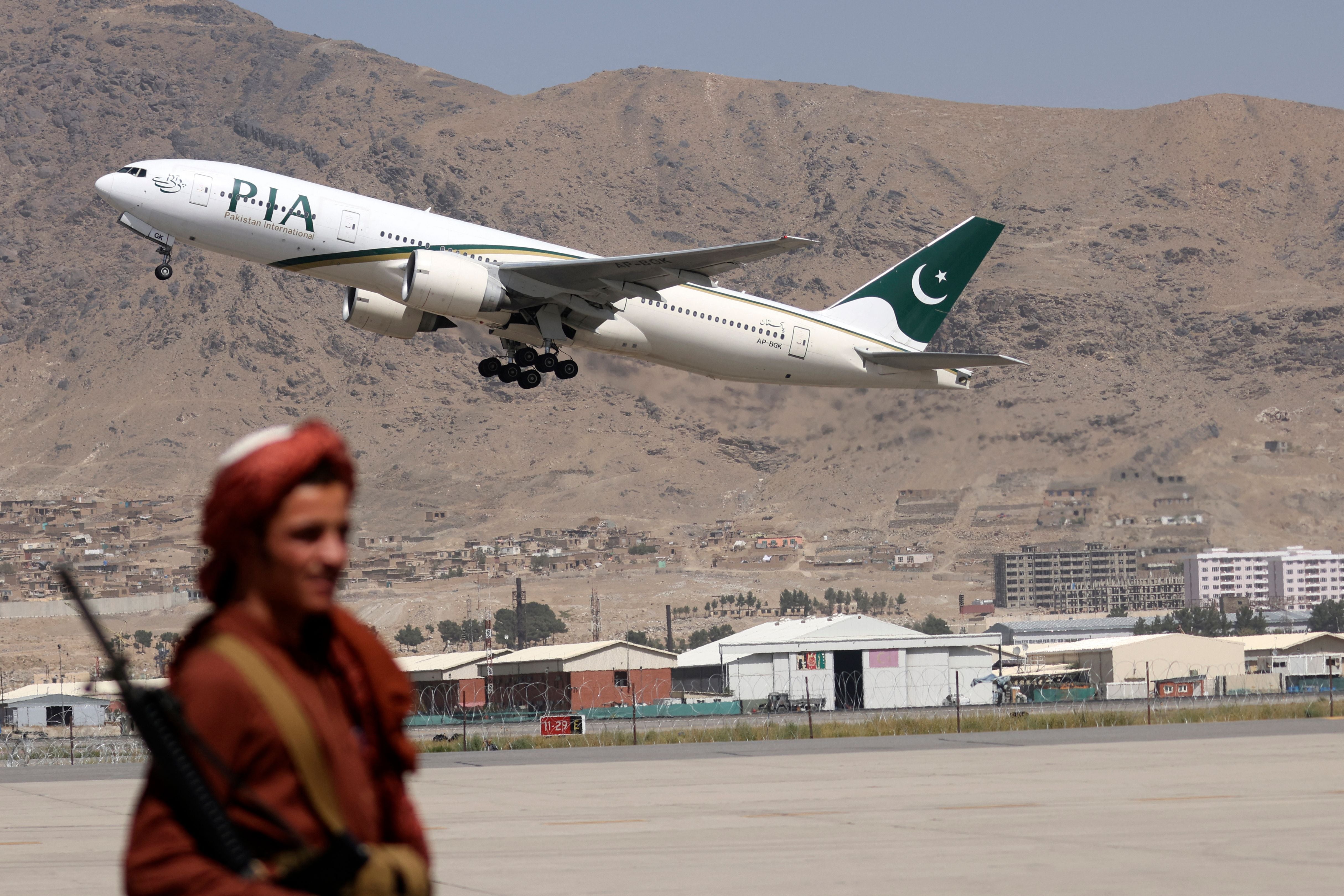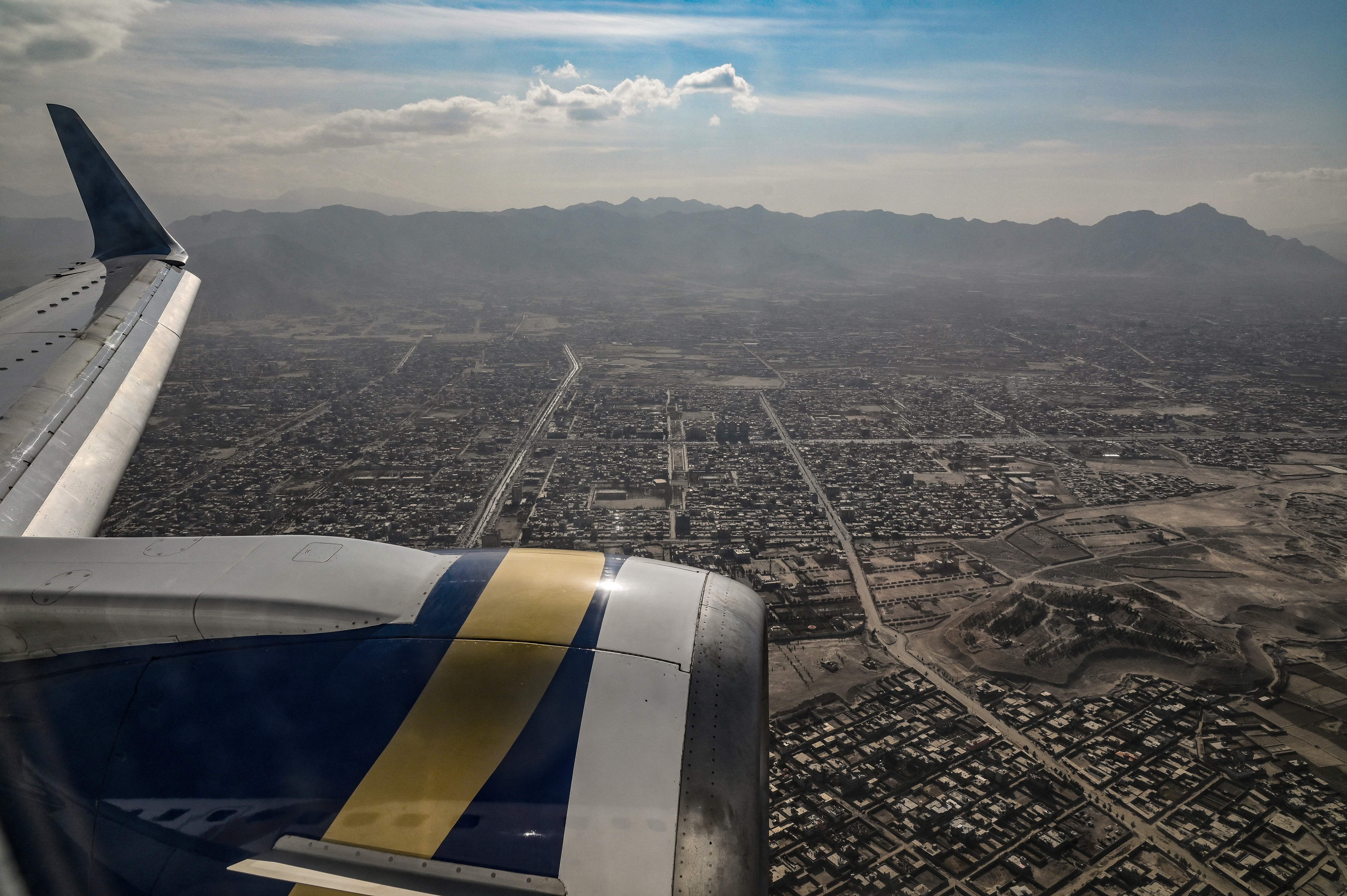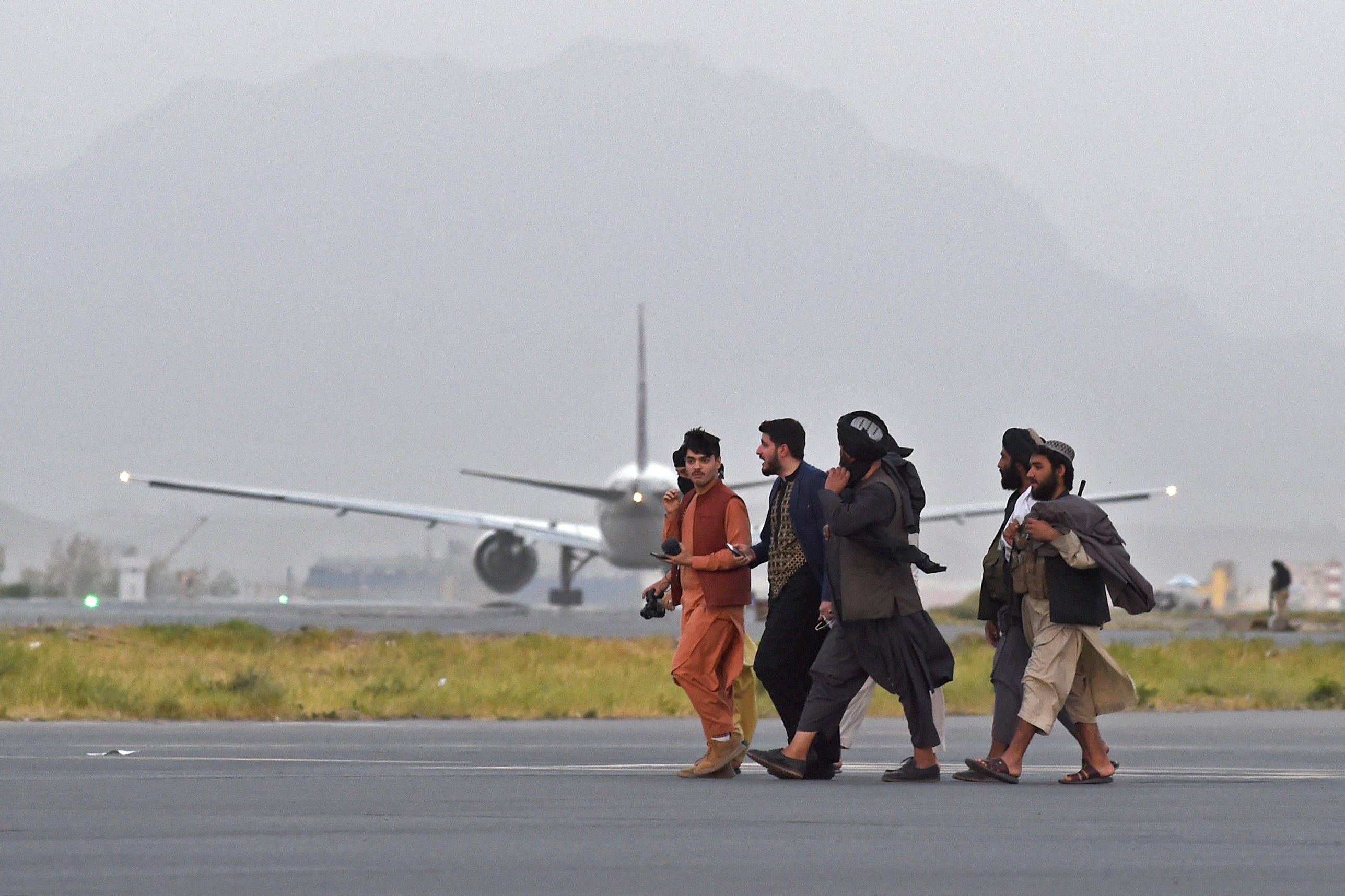Taliban profit as flights diverted around Middle East crisis fill up Afghan airspace
Flying through Afghan airspace is proving to be the safest option for international airlines, with Iran’s missile bombardment of Israel causing a noticeable shift in flight patterns

Your support helps us to tell the story
Our mission is to deliver unbiased, fact-based reporting that holds power to account and exposes the truth.
Whether $5 or $50, every contribution counts.
Support us to deliver journalism without an agenda.

Louise Thomas
Editor
The number of international flights passing through Taliban-controlled Afghan airspace reached a record high this week in the aftermath of Iran’s missile attack against Israel.
On Thursday a record 191 flights passed over Afghanistan, with airlines paying the country’s civil aviation ministry $700 per flight for the privilege. The payments represent a significant and growing revenue stream for the cash-strapped Taliban regime.
Afghan airspace became off-limits to international flights amid safety fears around the time of the collapse of the Nato-allied government in August 2021, when Western militaries withdrew from Kabul and the hardline Islamist group seized control of the country.
But those planes have steadily been returning, particularly in the past year since the 7 October attack on Israel by Hamas and the subsequent war in Gaza. In the second week of August Afghanistan saw more than seven times the number of flights through its airspace compared to August 2023, data from FlightRadar24 showed.
And this shift accelerated dramatically earlier this week when Iran launched almost 200 ballistic missiles at Israel, forcing many more airlines to give up the usual route from Europe to Asia through Iranian airspace.
Data from FlightRadar24, analysed by The Independent, shows an average of 147 flights per day travelled through Afghan airspace between 19 and 30 September, not including journeys that start or finish in Afghanistan itself.
The number spiked 20 per cent to 171 on Tuesday as Iran carried out its attack, beginning early in the morning, and jumped again to 191 on Thursday, the most flights to transit through Afghanistan on a single day since the Taliban takeover.
Among the airlines whose flights are returning to Afghan skies are Swiss Air, Finnair, Singapore Airlines, British Airways, and Lufthansa.

FlightRadar24’s spokesperson Ian Petchenik told The Independent: “We’re seeing aircraft that would normally transit through Iran make use of Afghanistan airspace now. As we start to see more and more airspace restrictions [in the Middle East], airlines are making a trade-off or a calculated decision on risk – is this a safe method of operation? And is it safer than the alternative that still allows us to operate these flights?”
A video has been widely shared on social media that was taken from inside a passenger jet over the Middle East as Iran launched its ballistic missiles at Israel, showing giant fireballs visible from the plane’s window. There are reports that air traffic control towers across the region were also caught unawares as they became flooded with urgent requests for guidance from pilots.
“Airline companies, in particular of the West, received thousands of requests from pilots to avoid airspaces in Iran and Syria, forcing them to opt for the Afghanistan air corridor, which is relatively less risky,” says Anant Mishra, an Afghanistan commentator and visiting fellow at the International Centre for Policing and Security, University of South Wales.
The decision to avoid Afghan airspace after August 2021 was not just borne out of safety concerns – it was also a political decision, a means of pressurising the Taliban by denying them a source of international currency.

The amounts paid by airlines are not enormous, but neither are the Taliban’s total revenues: World Bank estimates put the de facto Afghan government’s entire income between March and August this year at just AFN 90.6bn (about $1.3bn). If flights continued at Thursday’s rate it would be worth around $50m a year to the Taliban.
“The idea of not allowing Afghan airspace to be used was to basically pressurise them, by not paying them overflight fees by airlines, as a way of signalling that they really need to deliver on security guarantees [and] on a number of things that the West has asked for,” says Kabir Taneja from the Observer Research Foundation think-tank in Delhi.
He suggests those considerations will always rank lower than the nightmare scenario of a military threat to passenger aviation. “There is always imminent danger with civil traffic over conflict zones, always a question mark on it,” he says.
“Be it the MH17 plane shot down over Ukraine or Boeing 737 shot down over Iran, it’s not new and it shows that things can go horribly wrong in the fog of war when it comes to civil aviation.
“Afghanistan airspace, we presume, is being seen as safer than Iranian airspace right now. We don’t know how long these changes will last.”
Flights crossing Afghan airspace at 35,000ft are less likely to be the targets of surface-to-air missiles, Mr Taneja says, adding that terrorist groups in Afghanistan just do not have those kinds of capabilities, despite access to some leftover American weapons. According to the Federal Aviation Administration (FAA), flights at or above 32,000ft in Afghanistan remain out of reach of such weapons, even if fired from a mountain top.

Graeme Smith, a senior analyst on Afghanistan with Crisis Group, says returning to Afghan skies makes sense for many routes across the region. “For airlines, it reduces their carbon footprints and cuts costs by giving them more direct routes,” he explains.
He argues that it is also no bad thing as long as the funding from these flights reaches ordinary Afghans, who have seen their country’s economy crash since the Taliban takeover. “The increased reliance on Afghan airspace will never amount to a very large source of revenues for the Taliban-controlled state, but every bit helps with funding essential services such as health and education,” he says.
Subscribe to Independent Premium to bookmark this article
Want to bookmark your favourite articles and stories to read or reference later? Start your Independent Premium subscription today.
Join our commenting forum
Join thought-provoking conversations, follow other Independent readers and see their replies
Comments